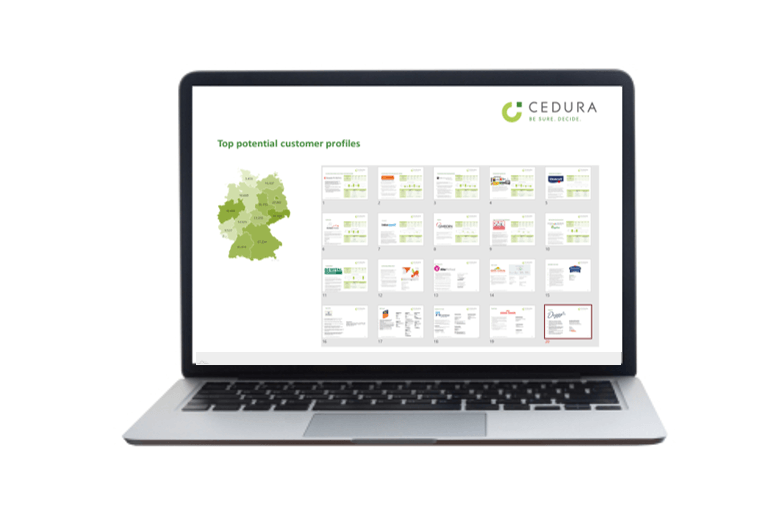Installed Base – Blog Post by CEDURA
For a long time, and certainly even today, the question of one’s own installed base has not been readily answerable for many machinery and equipment manufacturers:
- What resides in your customers facilities?
- What should actually be there?
- What share do you have in equipment, machinery and service?
Exchange, service, spare parts and modification potentials are not fully exploited due to a lack of transparency. This is especially true for companies offering long-lasting products and whose installations predate the era of automated data collection.
Understanding the installed base is crucial for companies as it provides insights into current market share, potential revenue opportunities for services such as maintenance and support, as well as potential upgrade or cross-selling opportunities.
Which competitive machines are present in your customers’ facilities and how strong is your position?
One might simplistically claim, “We’re present in all of our customers’ facilities and have an overview of their entire machinery fleet.” But is that truly the case? Do you actually have access to this information? And are you certain that you’ve visited all your customers’ facilities? Are you familiar with all their locations?
Does tracking your own sales, converting lost-order analyses into a customer installed base, monitoring the competition’s reference reports and observing successful installations in social media posts all factor into your assessment?
How large is your share of installed equipment, machinery and services?
Understanding a company’s share of equipment, machinery and services is crucial for comprehending its reach and influence in the market. The term “Installed Base” refers to the total number of products or devices manufactured by a company that have been installed and put into operation by customers. This connection enables companies to better grasp the size of their Installed Base and make strategic decisions to expand and maintain it.
What about the theoretical Installed Base?
The theoretical Installed Base, on the other hand, refers to the estimated or theoretical number of products or devices from a specific manufacturer that could potentially be installed, based on various factors such as market size, market penetration rates, sales figures and other statistical models.
In contrast to the actual Installed Base, which represents the actual number of installed products, the theoretical Installed Base is an estimate or approximation of a company’s potential reach in the market. It is often used to estimate market potentials, create revenue forecasts and develop marketing strategies.
Overview of the Key Points:
When it comes to the topic of Installed Base, as mentioned above, there are several important points that need to be considered. To provide an idea and keep track, here are some of the points broken down for you:
- Data Accuracy: Having accurate information about the installed base is crucial, including the number, locations and specifications of installed products or devices.
- Transparency: Companies should have a clear understanding of where their products are located and how they are being used to identify potential opportunities for upgrades, maintenance, or cross-selling.
- Data Privacy and Security: Since information about the installed base can be sensitive data, it’s important to take appropriate measures to protect the privacy and security of this data.
- Timeliness: Data about the installed base should be regularly updated to ensure that it is current and relevant. This enables better decision-making for the future.
- Integration with Other Systems: Information about the installed base should be seamlessly integrated into other business systems to enable effective utilization and analysis.
- Analysis and Utilization: Companies should utilize data about the installed base to gain insights into customer behavior, market opportunities and product performance, enabling them to make strategic decisions accordingly.






0 Comments